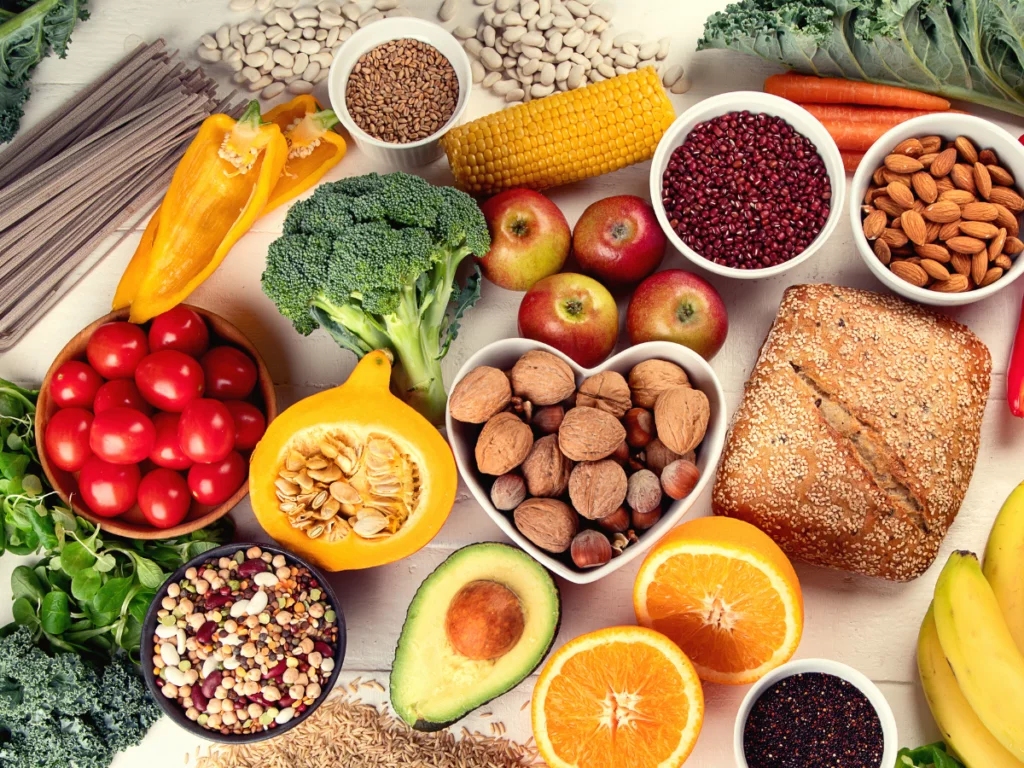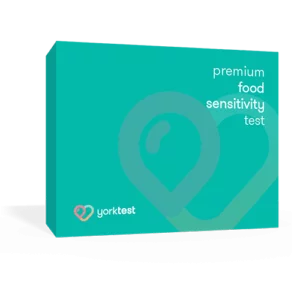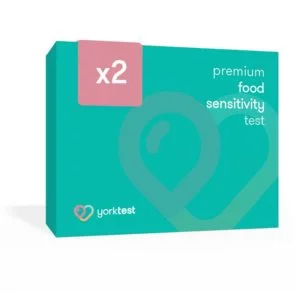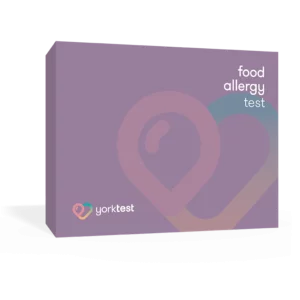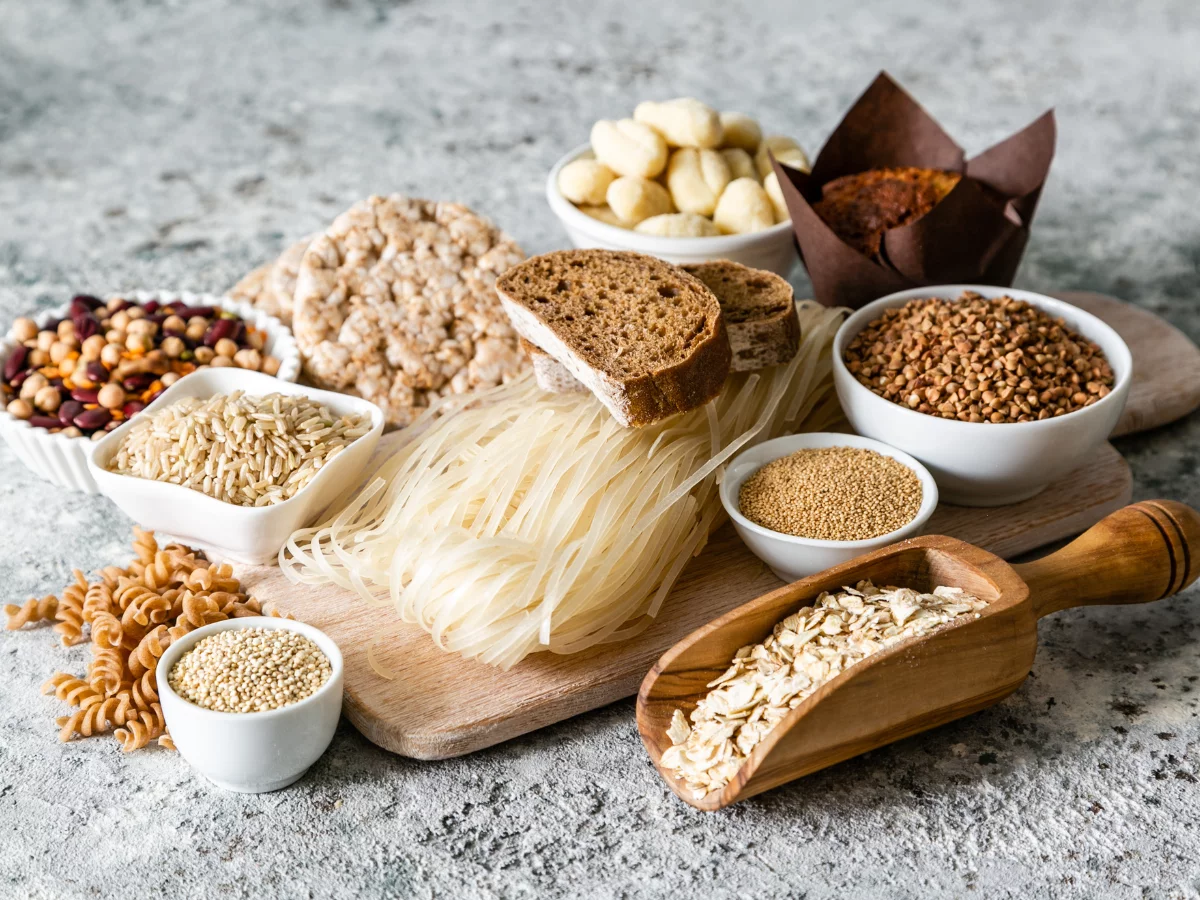- What are the most common food sensitivities?
- Eggs
- Common symptoms
- Which foods to avoid if youâre sensitive to eggs
- Dairy
- Common symptoms
- Which foods to avoid if you are sensitive to dairy
- Gluten
- Common symptoms
- Which foods to avoid if you are sensitive to Gluten
- Oats
- Common symptoms
- Which foods to avoid if you have an oat sensitivity
- Alcohol
- Common symptoms
- Which drinks to avoid
- Tomato
- Common symptoms
- Which foods to avoid if you are sensitive to Tomatoes
- Corn
- Common Symptoms
- Which foods to avoid if you are sensitive to corn
- Coffee
- Common symptoms
- Which drinks to avoid if you have a coffee sensitivity
- Shellfish
- Common symptoms
- Which foods to avoid if you are sensitive to shellfish
- 10. Nuts
- Common symptoms
- Which foods to avoid if you are sensitive to nuts
- Identify your personal sensitivities
Food sensitivities in the US are on the rise, affecting approximately 45% of the American public. When talking about a food sensitivity it’s important to remember that this is not the same as a food allergy. People often use the two terms interchangeably, but they are distinct biological processes which vary in severity and onset. You can learn more about the differences in our guide to defining food sensitivities.
The key defining feature of a food sensitivity is that our bodies produce an immune response triggered by proteins in certain foods, releasing immunoglobulin G (IgG) antibodies. You can take a food sensitivity test to measure your IgG reactions to 200 ingredients to identify the foods you may be sensitive to.
Below we explore 10 of the most common food sensitivities and their symptoms and offer advice on which foods to avoid to better mitigate your symptoms.
What are the most common food sensitivities?
1. Eggs
Eggs are a good source of multivitamins and nutrients and a key ingredient in many world cuisines. In fact, 1 egg makes up about 15% of our daily requirement for protein and are a rich source of vitamin A, B, D and E as well as calcium and iron! But for many, they can also cause a range of digestive issues if their immune system reacts to the protein present in egg yolk, egg white, or both.
Common symptoms
The onset of egg sensitivity symptoms is slower and more gradual than an egg allergy – which is a more severe and rapidly developing IgE reaction. A sensitivity to eggs can develop at any stage of life with people experiencing one or more of the following symptoms:
- Digestive Issues: IBS, bloating, stomach ache
- Severe headaches and migraines
- Skin conditions: eczema, acne, itchiness, rashes
- Lack of energy and lethargy
- Brain fog
- Persistent aching, swelling of the joints
- Mental health issues: depression, anxiety
- Respiratory complaints
Which foods to avoid if you’re sensitive to eggs
Egg yolks, egg whites or both are added to many popular food products, typically to bind or to thicken. Being aware of these is important when making changes to optimize your diet. The following list of ingredients and other foods can contain egg and should be avoided if you have an intolerance:
- Bread and cakes
- Pancakes
- Quiches
- Desserts
- Sauces and spreads
- Mayonnaise
- Ice cream
If you have an egg sensitivity, it is also useful to habitually read food labels and familiarise yourself with the various names used to refer to eggs if you are trying to eliminate them from your diet altogether. These include:
- Albumin
- Globulin
- Lecithin (E322)
- Egg derived lysozyme (E1105)
- Ovomucoid
- Ovovitellin
- Livetin
When eliminating eggs from your diet it is important to opt for other nutrient-rich foods, that can meet our bodies’ daily nutritional needs such as dairy, meat and fish, beans and legumes along with nuts and seeds.
Baking without eggs is also achievable by replacing it with avocado and using mashed fruit for binding and cornstarch as a thickening agent. You can even use the drained water from tinned chickpeas as a substitute to egg whites.
2. Dairy
Sensitivity to dairy – that’s milk and its derivatives such as cheese, yogurt, creams, and butter – is one of the most common food sensitivities both within the US and globally. If you suspect you have a dairy sensitivity, it could be caused by lactose intolerance or your body might be reacting to the protein (casein) found in milk and other dairy products.
Lactose intolerance is caused by lactase deficiency, an enzyme that break down lactose which is a type of sugar found in milk and other dairy products. People who suffer from lactose intolerance are unable to fully digest lactose. The undigested sugars eventually end up in the colon and begin to ferment, producing gas that can lead to cramping, bloating, flatulence and more. According to PCRM, certain ethnic groups have a higher prevalence of lactose sensitivity with Asian Americans being the most lactose sensitive at 95%, followed by Native Americans at 74%, African Americans at 70%, Mexican Americans at 53% and Caucasians at 15%. A food sensitivity blood test cannot determine whether you are lactose intolerant. You should speak to your doctor about getting a hydrogen breath test to diagnose lactose intolerance.
A milk sensitivity on the other hand, is a food-specific IgG reaction, which occurs when your body reacts negatively to the protein casein found in milk and other dairy products. This can cause some people to experience gastrointestinal discomfort and other unpleasant symptoms.
Common symptoms
Dairy sensitivity, while not life-threatening, can lead to an array of symptoms which can impact everyday life and include:
- Bloating, flatulence
- Skin conditions: Eczema, Psoriasis, Urticaria (hives), Rashes, itchy skin
- Headaches and Migraines
- Weight Gain
- Anxiety, depression
Which foods to avoid if you are sensitive to dairy
Whether you are lactose intolerant, or your body is reacting to casein, you will want to avoid all dairy-based foods that trigger your symptoms. For this reason, it is best to try and eliminate from your diet:
- All types of animal milk (cow, sheep, goat)
- Cream (single, double, soured, whipped)
- Cheeses (hard, soft and spreadable)
- Butter and buttermilk
- Crème fraiche
- Fromage frais
- Ice cream
- Yogurt
- Any products containing hidden dairy ingredients including chocolate, cookies, cakes and more.
Replacing these with dairy-free alternatives such as almond milk, coconut milk or oat milk can help improve your symptoms while continuing to enjoy the foods you love.
3. Gluten
Gluten is extremely common in our daily diet. From bread and cookies to pasta and pastry, it is found in a variety of grains including wheat, barley, rye and spelt. Gluten’s binding and thickening properties also makes it one of the most common hidden ingredients in the food we consume. It is often used when making sauces and gravies, for example, This can pose a real challenge for people who have a gluten sensitivity if they don’t know which foods to look out for.
Common symptoms
For those who experience gluten sensitivity, their symptoms can vary in severity and type. A reaction to gluten sensitivity can also have a delayed onset with symptoms occurring any time up to 72 hours after consuming foods that contain gluten. People with a sensitivity to gluten may experience:
- Headaches
- Anxiety
- Lethargy
- Foggy mind
- Fatigue
- Bloating
- Excessive Gas
- Abdominal Pain
- Weight Gain
- Diarrhea
- Skin Rash, Eczema
- Muscle Pain
It’s important to remember that gluten sensitivity is different to celiac disease. If you think you are celiac you should seek advice from your doctor. Our guide to celiac disease vs. gluten intolerance vs. wheat sensitivity provides more information on the different reactions the body can have to gluten.
Which foods to avoid if you are sensitive to Gluten
Grains like wheat, barley and rye are staples found in a variety of breads, bakes and processed foods. To begin a gluten elimination diet, make a habit of reading food labels as gluten can also be a hidden ingredient where it is used for flavoring, coloring or as a thickening and binding agent in various sauces, drinks and toppings.
As a rule, unless the following foods are labelled as gluten-free or made with a gluten-free alternative, they are best avoided:
- Barley based drinks: Beer, ale, porter, stout
- Breads, cakes, pies and pastries
- Cereals
- Cookies and crackers
- Pastas
- Gravies
- Malt, malt flavouring and other malt products
- Hot dogs and processed lunch meats
- Imitation meat or seafood
- Salad dressings
- Soy sauce and other sauces
- Seasoned rice mixes
- Potato and tortilla chips and other seasoned snack foods
- Soups, bouillon, or soup mixes
While removing gluten from your diet might seem like an initial challenge, stocking up your pantry with gluten-free staples such as rice, corn, buckwheat and millet is an easy way to add bulk to your meals. For baking, you can replace ingredients containing gluten with substitute thickeners such as agar-agar, guar gum, carob flour and potato flour. You should seek advice from a qualified Nutritional Therapist before making significant changes to your diet.
4. Oats
While oats are packed with nutritional goodness and can make for a filling breakfast, for those with an oat sensitivity, there might be more pain than pleasure in the long run thanks to an IgG immune response to the protein in oats which causes inflammation in the body.
Common symptoms
If you suspect you may have an oat sensitivity, the signs and symptoms to keep an eye out for include:
- Digestive issues: bloating, flatulence, stomach cramps, diarrhea
- Headaches or migraines
- Skin issues such as rashes, eczema or itchiness
- Lethargy
- Fatigue
Which foods to avoid if you have an oat sensitivity
If you suspect you may be sensitive to oats, a good place to start is removing products that contain oats from your diet such as:
- Oatmeal
- Oatcakes
- Oatbread
- Oat milk
- Flapjacks
- Granola
- Cookies and cereal bars containing oats
- Oat beers and stouts
The good news is that if you are suffering from an oat sensitivity, oats are only one of many healthy fiber-rich staples and can easily be replaced with other nutritious alternatives such as brown rice, quinoa, millet, or buckwheat.
5. Alcohol
An alcohol sensitivity can be caused by issues with the body’s ability to breakdown alcohol efficiently similar to lactose intolerance it is caused by an enzyme deficiency and so it is not always down to an IgG reaction. However, sensitivity to alcohol can also indicate that your body is having an IgG response to one or more of the popular ingredients added to alcoholic drinks during the manufacturing or fermentation process. For example, grains, fruits or yeast.
Common symptoms
An alcohol sensitivity can manifest differently from person to person with symptoms varying in type, onset, and severity. The symptoms can include one, or more of the following:
- Facial warmth and redness
- Nasal congestion
- Nausea and Vomiting
- Rapid Heartbeat
- Headaches
- Low blood pressure
- Breathing difficulties
- Skin reactions like hives or rashes
Which drinks to avoid
If you have an alcohol sensitivity, a good first step is reducing or removing your alcohol intake altogether. However, if your sensitivity symptoms persist then your body might still be producing an IgG reaction to one or several of the popular ingredients used in the manufacturing of alcoholic drinks. These can include brewer’s yeast, the fruits in alcohol such as grapes or berries, hops and grains such as wheat or barley. Identifying the offending ingredient and replacing it with alternatives is key to improving your sensitivity symptoms.
6. Tomato
Tomatoes are the second most popular staple in the American diet – potatoes are first if you were wondering. They are typically consumed in the form of sauces, toppings, and ketchup. Tomato sensitivity occurs when your body reacts adversely after consuming tomatoes or tomato-based products.
If you suffer with a tomato sensitivity, this might be due to several reasons:
- An IgG immune response to the protein in tomatoes which causes inflammation in the body. The resulting symptoms are unpleasant and can affect a person’s quality of life but are non-life threatening.
- A sensitivity to alkaloids, a hard to digest chemical compound found in tomatoes and other fruit and vegetables that are part of the nightshade family of plants. This also includes white potatoes, eggplant, bell peppers, paprika and goji berries.
- If you regularly experience heartburn or suffer from gastroesophageal reflux disease (GERD), the acidic content of tomatoes whether in fresh tomatoes or canned can also aggravate symptoms and are best avoided.
Common symptoms
If you find you have a sensitivity to tomatoes, you may be experiencing one or more of the following:
- Bloating
- Abdominal pains
- Nausea
- Diarrhea
- IBS
- Skin rashes or eczema
- Joint pain
Which foods to avoid if you are sensitive to Tomatoes
Eliminating tomatoes from your daily diet, whether they come in fresh or processed form, is the best method to improve your symptoms if you experience a sensitivity to tomatoes. With that in mind, it is best to avoid:
- Raw tomatoes
- Spaghetti Sauce
- Ketchup and Barbecue Sauce
- Canned tomatoes
- Sun-dried tomatoes
Keeping a keen eye on food labels will also come in handy to be on the look-out for those hidden tomato-based ingredients in pizzas, pasta sauces and a range of tv dinners and other pre-prepared foods.
Easy substitutes that ensure you can still enjoy your favorite dishes include beets, carrots and grapes to add sweetness to your salads while also stocking up on some immune boosting Vitamin C.
7. Corn
Whether it’s sweet corn, flint corn (aka popcorn) or field corn, the latter used in most processed foods, takeouts and drinks, this grain is a common staple in most American diets. But consuming corn can become a headache – a metaphorical and a literal one – for people with a corn sensitivity.
Common Symptoms
An IgG immune response to foods where corn is a main or an added ingredient can lead to an inflammatory response accompanied by one or more of the following symptoms:
- Headaches
- Joint and muscle pain
- Upset stomach
- Fatigue
- Nausea
- Bloating
- Abdominal pain
- Diarrhea
Which foods to avoid if you are sensitive to corn
If you struggle with corn sensitivity, it is worth eliminating all types of corn in both fresh and processed form from your daily diet. Standalone corn products include:
- Corn on the hob
- Tinned sweet corn
- Baby sweet corn
- Corn flour tortillas, tacos, or enchiladas
- Corn or maize crisps
Due to its wide use in food and drink manufacturing, read labels habitually when shopping and avoid the following list of ingredients:
- Dextri-maltose
- Dextrin
- Dextrose
- Fructose
- Glucose and Glucose syrup
- Cereal starch
- Modified starch
- Vegetable oil
- High fructose corn syrup (HFCS)
Getting around your corn sensitivity does not have to be a challenge when other widely available grain alternatives including wheat, rye, rice and lentils can be used as a replacement.
8. Coffee
For most people, a steaming cup of morning coffee is one of life’s simple pleasures. But when you have a coffee sensitivity, your body reacts to the caffeine molecules and/or proteins found in coffee and any other caffeinated beverages and foods, making you think twice whether the energy boost from a fresh cup of coffee is after all worth the trouble it might be causing you.
Common symptoms
If you suspect your symptoms are caused by coffee sensitivity, you might be experiencing:
- Insomnia
- Anxiety
- Restlessness
- Headaches and Migraines
- Palpitations and high blood pressure
- Fatigue
- Digestive issues and IBS
Which drinks to avoid if you have a coffee sensitivity
Removing coffee from your diet and replacing it with caffeine-free drinks is a good first step to avoiding the symptoms induced by a sensitivity to caffeinated drinks. Similarly, you might want to look for alternatives to processed foods that contain coffee as an ingredient including ice-cream flavored coffee, coffee cakes and coffee-infused alcoholic drinks.
You might also want to check whether your sensitivity is due to the caffeine content in coffee or if the preparation process is to blame. Checking whether your sensitivity is not triggered by how concentrated the brew is, or the type of milk or creamer you use that may be the offending ingredient.
But if you’re still not sure and would rather give up the morning cup of joe altogether, trying herbal teas or coffee replacement alternatives might be the way to go.
9. Shellfish
If you’re looking to boost your intake of Omega 3 and fatty acids, shellfish and seafood are great ways to get those vital nutrients. But if you have a shellfish sensitivity, there may be more pain than gain.
Common symptoms
Shellfish sensitivity can manifest gradually, it may take up to 72 hours for the full onset of symptoms. While not potentially life threatening like a shellfish allergy, they can be very unpleasant and can include the following:
- Abdominal pain
- Bloating
- Diarrhea
- Nausea
- Vomiting
Which foods to avoid if you are sensitive to shellfish
When dining out or grocery shopping you should avoid:
- White fish: cod, plaice, sole, coley, haddock, pollock, monkfish
- Oily fish: mackerel, tuna, sardines, anchovies, salmon, pilchards, herring, trout
- Molluscs: clams, mussels, oysters, snails, scallops, squid, octopus
- Crustaceans: Shrimp, Crab, Lobster, Crayfish
Habitually reading food labels can also help you to avoid shellfish as an added ingredient in sauces, soups or processed food products.
A shellfish sensitivity doesn’t necessarily mean you have to avoid all fish. Learn to differentiate between the different types of fish (white fish vs. oily fish vs. molluscs and crustaceans) so you can keep your shellfish sensitivity at bay.
To prevent lacking in vital nutrients and Omega fatty acids, try consuming alternative foods such as leafy greens, avocado, nuts, eggs, oils (coconut, olive, flaxseed) and tofu.
10. Nuts
If you routinely experience discomfort and digestive issues within a 72-hour window after consuming nuts, then it’s possible you have a sensitivity. Nut allergy symptoms are more severe and can lead to swelling, difficulty breathing and even anaphylaxis, a life-threatening condition that requires immediate medical attention.
Common symptoms
If you have a nut sensitivity you are likely to experience digestive discomfort with symptoms such as:
- Abdominal pain
- Bloating
- Gas
- Nausea
- Diarrhea
Which foods to avoid if you are sensitive to nuts
If you have a nut sensitivity act with caution and avoid foods that contain nuts or nut products. As a rule, avoid or double-check the labels for:
- Legumes (peanuts)
- Beans, peas, alfalfa, lentils and soybeans
- Drupes (almonds and walnuts)
- Tree nuts (pistachios, hazelnuts, pecans, pinenuts, chestnuts, Brazil nuts, cashews and macadamia)
- Coconut
- Nut oils
You may find you are sensitive to some nuts but not others, in which case you don’t have to be as strict in eliminating all nuts from your diet. Taking a food sensitivity test can help you to identify which specific nuts are triggering a high IgG reaction.
While nuts are rich in fatty acids and other valuable nutrients, you can still ensure your body gets what it needs from alternative foods such as olives, seeds (sunflower, pumpkin) and superfoods like avocado.
Identify your personal sensitivities
In this article we’ve covered ten common food sensitivities. But we are all unique and react different to foods. You may find that you have no issues with these foods but develop symptoms after eating strawberries, or garlic, or pork.
If you suspect you have symptoms linked to your diet, the Premium Food Sensitivity Test can take the guesswork out of identifying your personal trigger foods. Collect your finger-prick blood sample at home then mail it to our accredited laboratory for analysis. Our scientists will test for IgG reactivity to 200 food and drinks, then you’ll receive your results online within 7 days.

